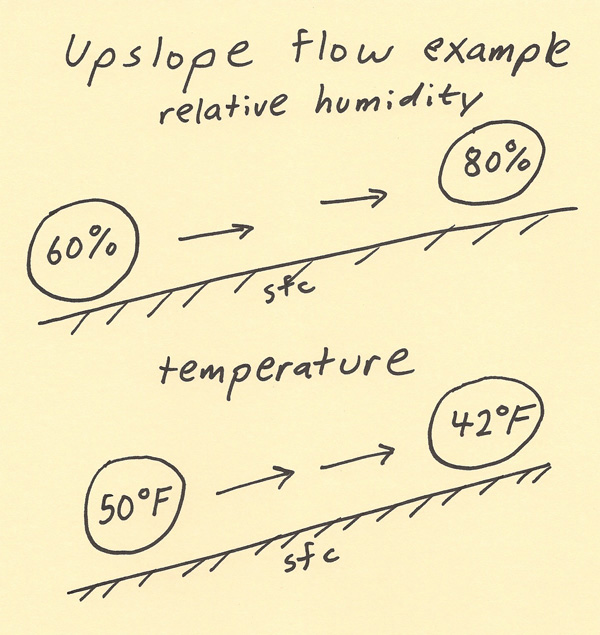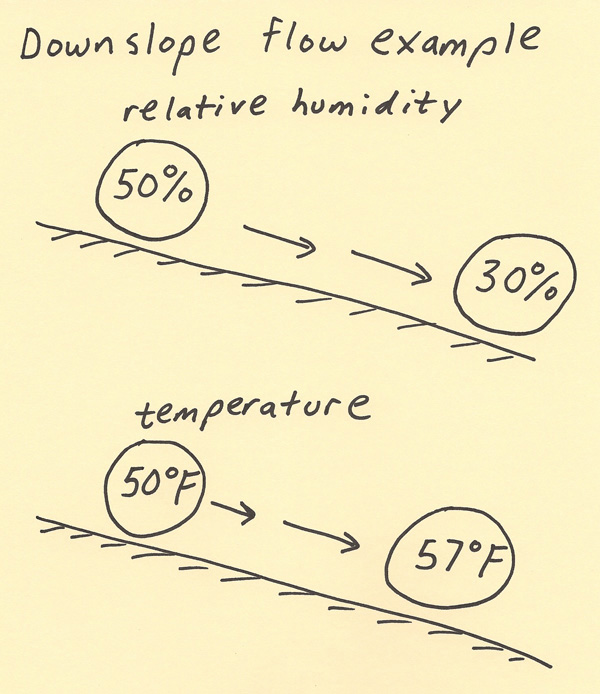
HABYTIME MINI LECTURE 31:
UPSLOPE AND DOWNSLOPE FLOW
| |||||||||||||||||||||||||||||||||||||||||||||||||||||||||||||||||||||||||||||||||||||||||||||||||||||||||||||||||||||||||||||||||||||||||||||||||||||||||||||||||||||||||||||||||||||||||||||||||||||||||||||||||||||||||||||||||||||||||||||||||||||||||||||||||||||||||||||||||||||||||||||||||||||||||||||||||||||||||||||||||||||||||||||||||||||||||||||||||||||||||||||||||||||||||||||||||||||||||||||||||||||||||||||||||||||||||||||||||||||||||||||||||||||||||||||||||||||||||||||||||||||||||||||||||||||||||||||||||||||||||||||||||||||||||||||||||||||||||||||||||||||||||||||||||||||||||||||||||||||||||||||||||||||||||||||||||||||||||||||||||||||||||
METEOROLOGIST JEFF HABY
Upslope flow is air moving over terrain such that it flows from a lower to a high elevation. This in effect produces a lifting of the air. Air
that rises undergoes adiabatic transformations to temperature and relative humidity. When air rises, the temperature decreases. This causes
the dewpoint and temperature to converge closer to each other. Mild and dry air will become cool and moist air when a significant amount
of upslope flow occurs. The diagram below shows an example of changes to relative humidity and temperature as air moves up a slope. This
is one reason why higher elevation regions tend to be cooler than lower elevation regions. If lifting is significant enough, the air can
become saturated due to upslope flow. This can make the weather more humid and increase the chance for precipitation. Stronger than
expected upslope flow can produce higher amounts of precipitation.

Downslope flow is air moving over terrain such that it flows from a higher to a lower elevation. This in effect produces a sinking
of the air. Air that sinks undergoes adiabatic transformations to temperature and relative humidity. When air sinks, the temperature
increases. This causes the dewpoint and temperature to diverge away from each other. Cool and moist air will become warmer and drier
air when a significant amount of downslope flow occurs. The diagram below shows an example of changes to relative humidity and temperature
as air moves down a slope. Downslope flow is important to weather forecasting since it can produce warmer weather, drier weather
and reduce the chances for precipitation.

|
|
|


